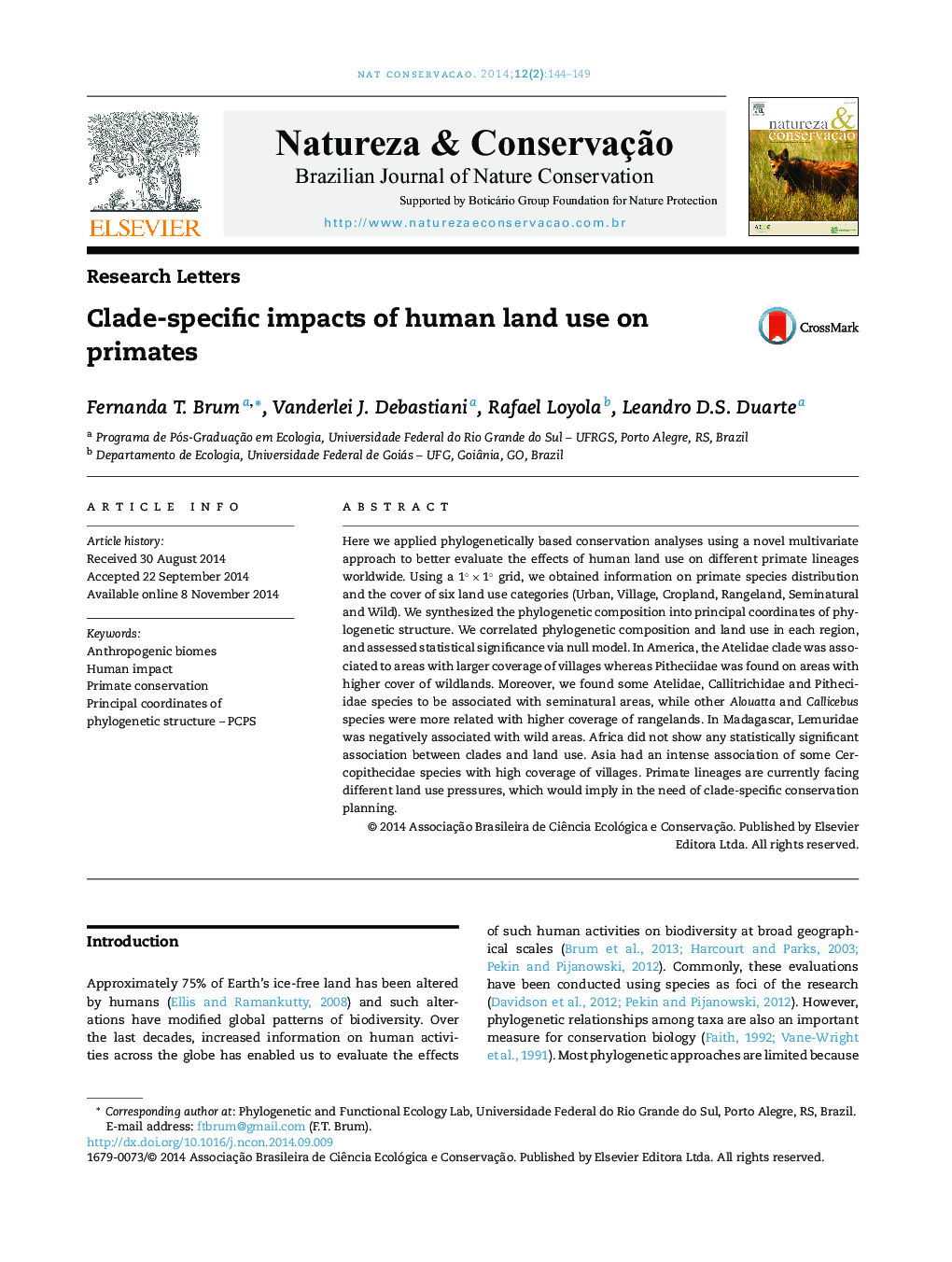| Article ID | Journal | Published Year | Pages | File Type |
|---|---|---|---|---|
| 4400812 | Natureza & Conservação | 2014 | 6 Pages |
Here we applied phylogenetically based conservation analyses using a novel multivariate approach to better evaluate the effects of human land use on different primate lineages worldwide. Using a 1° × 1° grid, we obtained information on primate species distribution and the cover of six land use categories (Urban, Village, Cropland, Rangeland, Seminatural and Wild). We synthesized the phylogenetic composition into principal coordinates of phylogenetic structure. We correlated phylogenetic composition and land use in each region, and assessed statistical significance via null model. In America, the Atelidae clade was associated to areas with larger coverage of villages whereas Pitheciidae was found on areas with higher cover of wildlands. Moreover, we found some Atelidae, Callitrichidae and Pitheciidae species to be associated with seminatural areas, while other Alouatta and Callicebus species were more related with higher coverage of rangelands. In Madagascar, Lemuridae was negatively associated with wild areas. Africa did not show any statistically significant association between clades and land use. Asia had an intense association of some Cercopithecidae species with high coverage of villages. Primate lineages are currently facing different land use pressures, which would imply in the need of clade-specific conservation planning.
